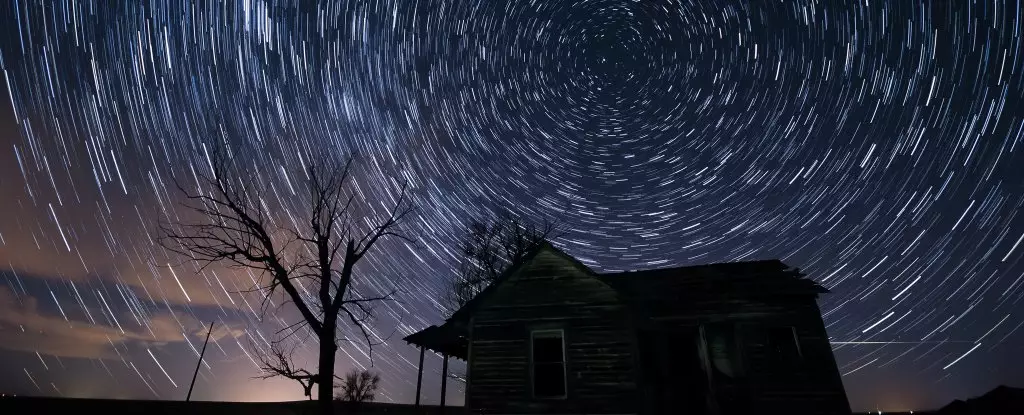As the new year dawns, stargazers and astronomy enthusiasts are in for a treat. The very first weekend of 2025 promises a series of remarkable celestial events that are bound to excite anyone with an interest in the cosmos. From meteor showers and planetary alignments to significant moments involving our lunar companion, the weekend of January 4th presents a myriad of opportunities for skywatching.
The Quadrantid Meteor Shower: A Brilliant Spectacle
Kicking off the astronomical events is the much-anticipated Quadrantid meteor shower, peaking on January 4th. This shower is known for its intense activity but remarkably short duration. With a Zenithal Hourly Rate (ZHR) projected at an impressive 80 meteors per hour, observers are likely to witness a brilliant display. Fortunately, conditions for viewing should be favorable, with only a 27% illumination from the waxing crescent Moon. This lighter moon phase will enhance visibility, allowing the meteors to shine through the tranquility of the night sky.
Astrophotographers and stargazers alike should remain vigilant on the mornings of January 3rd and 4th. Though the peak is expected around 15:00-18:00 Universal Time (UT) on January 3rd, migratory behavior of meteors may extend their display. Those in North America and Europe should seize the opportunity to gaze upward, ready to catch the elusive streaks of light that characterize the Quadrantids.
The Historical Significance of the Quadrantids
Interestingly, the name Quadrantids originates from a now-obsolete constellation known as Quadrans Muralis. This constellation was demarcated in the 18th century but later disbanded by the International Astronomical Union (IAU) in the early 20th century. The radiant of the meteor shower, located within the boundaries of modern constellations like Draco and Boötes, is yet another reminder of the rich tapestry of astronomical history.
Adding to the fascination is the peculiar source of the Quadrantids, which can be traced to the asteroid 2003 EH1. This origin makes it one of the few meteor showers to emanate from an asteroid rather than a comet, setting it apart from the well-known Geminids that also originate from a unique rocky-comet hybrid.
Coinciding with the peak of the Quadrantids, on January 4th, Earth reaches perihelion, marking its closest approach to the Sun. At 0.98333 Astronomical Units (AU) distant from the Sun, this phenomenon occurs at approximately 13:00 UT, or 8:00 AM EST. This temporal irony—that we are nearest to the Sun amidst the cold grasp of winter in the Northern Hemisphere—reflects the intricacies of our planet’s orbital mechanics and its current position in the Milankovitch cycles, which describe long-term climate changes driven by orbital variations.
It is intriguing to note how this proximity slightly alters the Sun’s apparent size in the sky. During this time, the Sun can appear marginally larger than at aphelion in July, when Earth is at its farthest point. This delightful quirk of celestial mechanics is often overlooked but adds depth to our understanding of terrestrial and cosmic relationships.
As if the Quadrantid meteor shower and perihelion weren’t enough, January 4th also features an occultation event where the Moon passes in front of Saturn around 17:24 UT. The Moon, showing a modest 25% illumination, provides ideal conditions for viewing this captivating spectacle, which will be best observed in Europe. Stargazers can expect to witness Saturn, with its magnificent rings, briefly concealed behind the Moon’s dark edge, re-emerging into view mere seconds later from its illuminated side.
This event, marking the first lunar occultation of the year, offers a memorable experience as Saturn, with its undeniably majestic silhouette, can be seen disappearing and then reappearing. For those who miss this occurrence, an additional occultation is scheduled for February 1st, ensuring multiple chances to enjoy the beauty of the cosmos interacting dynamically.
A Community of Stargazers
For anyone unable to witness these stunning celestial events in person due to location or weather conditions, fear not! Astronomer Gianluca Masi will host virtual sessions to share insights and coverage of the Quadrantids, the occultation of Saturn, and the lunar approaches near Venus. These online gatherings aim to create a communal experience, allowing participants from all over the globe to engage with astronomy in real-time, thus fostering a shared passion for the universe.
As January unfolds, skywatchers are encouraged not only to don their warmest attire and sip hot beverages while gazing skyward but also to embrace the community spirit of astronomy. With each event, we carve an opportunity to connect not just with the theater of the cosmos, but with one another as we appreciate the wonders of the universe together. Let this year commence with excitement and a renewed sense of curiosity about the skies above.


Leave a Reply